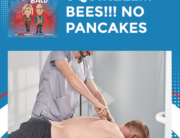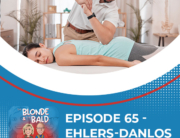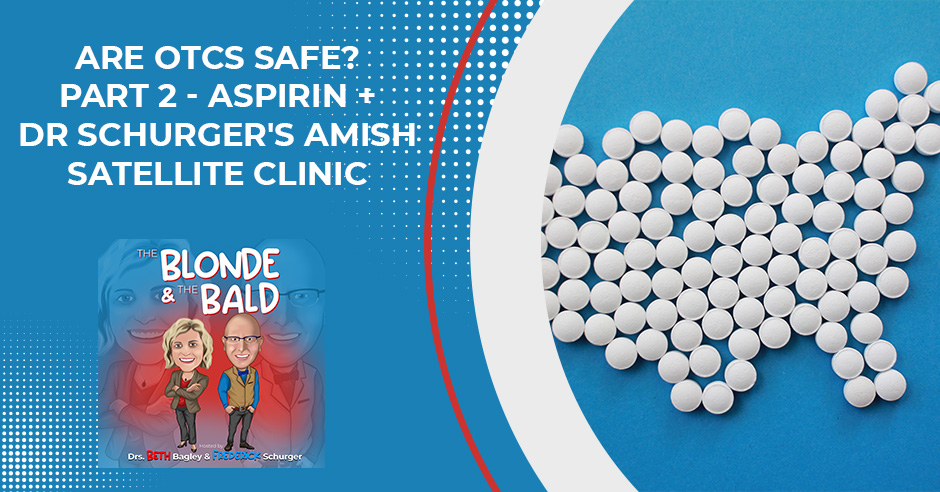
Health isn’t just about what you take; it’s about what you surround yourself with. In this episode, Dr. Bagley and Dr. Schurger discuss the hidden truths behind over-the-counter medications in the second part of their discussion. They talk about the history of medicine, exploring how aspirin’s dominance declined and the interesting shift towards the use of Tylenol. But that’s just the beginning. Throughout the episode, they shed light on chiropractic care, the real effects of aspirin, the sustenance of holistic health, and so much more. Don’t miss out on this value-packed episode. Tune in now and learn how to live a healthier, more vibrant life.
—
Watch the episode here
Listen to the podcast here
Are OTCs Safe? Part 2 – Aspirin + Dr Schurger’s Amish Satellite Clinic
Dr. Bagley, how are you?
I’m well. It’s been a great week. It has been a little slow because deer season is about to start here in Missouri. Is that in Illinois?
It’s been deer season. Rifle season starts. It’s slow because of the silly daylight savings time and nobody knows what time it is.
It’s dark and sad.
Here’s mine with daylight savings time. First, we changed the time and I got an extra hour of sleep. I’m like, “I didn’t get to bed until midnight. I was out with friends on Saturday night. We didn’t get out of Fogo until about 11:30 midnight almost.”
That’s way past my bedtime.
I started eating dinner way past my bedtime and then got a nice extra hour of sleep. I was in a hotel room. I was able to ease into my workout and get prepped. Monday morning comes along and what happens? I woke up at 3:30. Not 4:30, which would have been 5:30 before. I wake up at 3:30. My brain says, “No, this is definitely not the right time to get up. Go back to sleep.” I go back to sleep for three hours, sleeping through both of the alarms that I have.” I’m finally getting out of bed a little bit after 7:00.
What time do you start seeing patients on Monday mornings?
9:00.
That was getting started pushing it because it is your morning routine.
My morning routine is not happening. It becomes, “Get my coffee and try to resemble being a human. It wasn’t bad on Monday. On Tuesday, I do the same thing. On Wednesday, it’s still that way.” For this Indiana boy, it takes two weeks to get reset after the silly time change. I don’t care which side it is on.
We’ve talked about in the previous episode how the time change will cause people to have heart attacks. One of the subjects we’re going to talk about is a medication that is a lot of times given to people to prevent that, how that works and what they talk about now. There’s no research on it. I have a win from one of my patients. We’ve talked about her before. This person has pots that she passes out when she changes position.
She’s been doing fabulous. She’s doing more things around the house. She’s good, but then she had a real bad fall and knocked her way out of alignment. It was quite a dip in the progress she had made. She came in. She was holding her adjustment and amazingly, how fast she’s recovered. That’s one of the things I want to put out there.
When you’ve been under upper cervical care for a long time and you do have a setback and injury or something happens to you, it’s not the end of the world because your body is in such a better state to heal from that injury or that stressful event in your life where that could have set her back quite a bit or kept her bed-bound in the past. I’m very excited for her. That’s Dr. Lad’s patient. She is graduating in December 2023.
She’s doing great things already. An interesting thought that came to me as you were saying that. When you’ve been under care and you have a set, what would traditionally be a setback. You recover and maybe you don’t go back as far. I’ve had patients say that they feel like they had a set fall or something to that effect. They’re like, “It feels as bad as when I first came in.” I tell them right off the bat, “No. First off, definitely not, because you’re not going to fall back that far unless you take off months to years.”
The other thought that sat with that was if you’re taking medicine for the symptoms and trying to manage the symptoms with some medication when you have a fall like that, it doesn’t just like, “I need more of the med.” You’re probably taking as much of the measure you can tolerate, to begin with. The med is managing the symptoms as opposed to getting your body to function and heal better.
if you have a fall like that, it is not a, “It’ll be better here in a couple of days.” No, it might be a significant setback that might take you months to recover from where you were. That is one of the big differences. A lot of people, in fact, the medication we’re going to talk about takes care of pain as fast, if not faster, than a lot of chiropractic adjustments as they’ve compared. What is the long-term benefit of one versus the other? In any case, speaking of a similar situation, I have one of my patients. She was in the Army. She had a medical discharge due to rocking and they overloaded her pack or something like that.
What is rocking?
In the military sense, they basically have to carry all of their gear. You’re carrying 80 to 100 pounds for a 20-mile walk. It makes sense in the military. You’re training your infantry to be able to carry the gear that they need to survive from one spot to another.
I chose to be with my trainer. My trainer had me and my girls, because I trained with my twin, carry weight for 1 mile. I carried quite a bit of weight because I was like, “I’m strong. I can do it.” At first, you’re like, “This is fine.”
How much weight?
It was a 40-pound sandbag. It was a front carry. We relied to drop it when we needed to drop it. I did drop it quite a bit. That was the hardest workout I’ve ever done. Many times, I thought, “I’ll drive my car back here and I’ll pick this weight up. I will come and get it for you.” She was there saying, “You can do this. Take it back up. Get to the stop sign. Get to the next stop.” You know that place. I should have probably picked a lighter weight. I’ll be honest, that was my ego, but I still did it. I was proud of myself at the end. I was miserable the whole time.
How many people have carried not just 40 pounds in a sandbag but 40 extra pounds on their body? That’s the same problem. That’s why for people who are overweight and who are not physically active, going up a flight of stairs is a lot of work for them.
One more thing. When I was pregnant with the twins, I was 40 pounds heavier than I am now, but I did it. Let’s go back to your patient.
She’s got some lumbar degeneration. She’s had a couple of surgeries to take care of that. We’ve been keeping her head on straight as best as we can. We finally started putting all the pieces together because she was coming in to see me for her neck and headaches and yet that didn’t all get cleared out, but then we figured out that not only was her head off balance, but her psoas, which is one of your main hip flexors to lift your leg up and spinal stabilization. That’s a mess.
We started training her on how to strengthen the psoas and then she started working with a massage therapist and a PT to do even more with that. She’s finding all these pieces. She gets the psoas and her hip is doing better, and now her headaches have started getting better. It is all these parts and pieces that are coming together.
She’s been coming to see me for a couple of years now. We’re finally integrating all these bits and pieces to get her better, which I’m excited about because she’s on disability. She was medically discharged from the military and then she eventually got on disability outside of the military because she still couldn’t function. Now we’re putting all these pieces together again because sometimes you don’t get all the answers from one doctor, which is fine.
We love our colleagues.
There’s no one better than you and I put these top segments back in place, but we also realize that when it comes to hip stuff, it’s like, “We can do this much. There’s all of this other stuff that needs to get taken care of.” I’m excited for her. I would be surprised within about 6 to 8 months because she wants to work. She wants to be out there and doing things. In 6 to 8 months, she’s going to be fully functional. She’s tried to take the meds to try to calm down the pain and her response is, “It’s candy. It’s not touching anything. There’s no redeeming quality for it.”
The topic that I wanted to bring up is Aspirin. It’s something everyone knows. They’ve heard words like baby Aspirin, one Aspirin a day, and all these things that have changed, yet there are many people who have not changed their behavior because nobody’s told them. I’d like to reiterate that we are not your doctors. We don’t prescribe medications or take you off medications. We are podcasters.
If you need a doctor, find a doctor. Don’t take any of my word for it. Talk to your doctor or chiropractor about this stuff. In general, chiropractors don’t deal with medications directly. We do talk about medications and give people research so that they can make some decisions on their own, but this Aspirin is over-the-counter. It’s something that anyone can get.
This is part of our over-the-counter medications safe series because a lot of these over-the-counter meds are not as all that they’re cooked up to be.
Aspirin was the first anti-platelet medication and it decreases blood clotting and pain. People notice that pain affects. It reduces fevers.
It was originally made from Willow Bark.
If you did chew on the bark, that would be a healthier way to take it. It’s probably a different form of it.
The question becomes, “How much of the Aspirin out of the willow bar, but the willow bark had other protective things going on?”
You make a tea out of the tincture or something, and it would be different. We take the one active ingredient and we market that. Aspirin has been around for hundreds of years. It was around during the 1918 flu epidemic. It was probably a little bit before then. It reverses the enzyme activity for the body that creates blood clots. The low dose or baby Aspirin can almost completely inhibit the enzyme activity. It does affect the body for a prolonged time. It does a job. It works, but there are side effects to lots of things. Aspirin has quite a bit of side effects. There’s a lot.
Aspirin has quite a bit of side effects.
I’m not putting them in order of severity, but let’s talk about one, which is Aspirin-induced asthma. I didn’t know much about that and I was like, “That’s something that can happen.” There are these people taking Aspirin daily. Maybe they have breathing difficulties, too. Could this be related? I don’t know, but it’s something that I should know because I did not even know about Aspirin-induced asthma. That’s interesting to me. It can cause nasal polyps. This one we do know about is chronic gastritis. It causes bleeding and problems in the upper GI and it can also cause things in the lower GI. It can cause ulcers. That’s a pretty big deal.
We’re taking it daily. You can bruise your, which makes sense because if you’re reducing blood clotting, it’s easier. Nosebleed is another thing. It makes total sense. You’re decreasing your clotting. Shortness of breath, which I think has to do with asthma. It could be other things, such as hemorrhage and decreased platelets. It all makes sense with the mechanism action. We call it baby Aspirin because it’s 81 milligrams. It’s a small dose because there are bigger doses of Aspirin out there. Can babies take Aspirin? What’s your answer, doctor?
I would be very hesitant to give babies Aspirin.
They don’t call it baby Aspirin anymore for a reason. People say it that way but you won’t find that on any bottles.
Interestingly enough, it was always Saint Joe’s baby Aspirin, which I’m like, “Really? I thought it was Bayer or Johnson & Johnson because it’s been off-patent forever.” Funny aside, before we go on, I want to tell a short story about one of my good friends, Keith Wassung. We’ve talked about Keith in the past.
I’d love to have him on. He’s so great.
He would be great to have on the show. One of the things Keith shares is he would do these health lectures because chiropractic saved his life. He would do these health lectures at various places, including medical institutions. One of the things that he would do is talk about baby Aspirin. He would take either 1/2 or 1/4 of a baby Aspirin.
Sometimes at the beginning of his lecture, the other thing he would do is he would take one of these lancets that people use to prick their fingers so that they can do a glucose or Ketone test strip. He would show how. He’d squeeze his fingertip and all of a sudden, this nice little red droplet of blood would come out. It wouldn’t just pour out or money python squeezing out everywhere. It would make this nice little bubble. He’d be like, “This is how the platelet flack. Factors are supposed to work.”
He put a bandaid on that. Take that 1/4 or 1/2 baby Aspirin and then continue with his lecture. About 30 minutes later in the lecture, he would have a slide talking about the process of how the platelets, fibrinogen and all of these things come together to seal up a wound like that and how Aspirin interferes with this pathway, then that doesn’t work. At that point in time, he would undo the Band-Aid and squeeze a little bit. Instead of having that little droplet of blood stay there, it would now bleed freely onto the floor.
That’s how quickly it got into a system.
That’s how quickly that went through the whole system. He took it in the mouth and hit the stomach. Within 30 minutes, his finger would not clot at all. It’s a curious experiment. He told me that story and I’m like, “I don’t want to do that.”
“I’ll just talk about your fingers. I don’t want to put Aspirin.” That’s a great story. I’ve never heard that one. We definitely have to have Keith. Babies don’t take Aspirin. We don’t give kids Aspirin because of is this thing called Reye’s syndrome. It’s a rare condition. It causes swelling in the liver and brain. If children and teenagers are recovering from chickenpox or flu-like symptoms, they should not take Aspirin. It’s not safe for children. It’s no longer marketed to children, which is great, but it’s still being marketed to adults.

Aspirin: Babies don’t take aspirin. We don’t give kids aspirin. And the reason is this thing called Reye’s syndrome.
Let me bring up this CNN article, “Daily Aspirin to prevent heart attacks is no longer recommended for older adults.” Interesting. This was in 2019 and many people still don’t know about it. In general, they are beginning to say that it could be good for some, but it’s not one of those things like everybody takes a baby Aspirin every day. I do see it less in my patient population. Have you noticed it less?
I have. People are starting to hear about this. I don’t know about you, but I remember when I was in chiropractic school around 2003, they were even talking about how half a baby Aspirin daily was too much. They were even suggesting that all signs indicated that half every other day might be a better choice, whether or not that’s true or not at all.
The case studies that CNN put together and I’ll bring up some more recent ones, but said, “Taking a daily low-dose Aspirin is at best a waste of money for healthy older adults. At worst, it may increase the risk of internal bleeding and early death.” It is not such a good thing. It’s got to be at least twenty years of people taking these daily Aspirins.
It’s been longer than that. I think that’s been a standard of “care” for much longer than that. Heart attack risks started in the ‘80s, but in the ‘70s and the ‘80s, it became more prevalent. I don’t remember when they said they were starting to do the daily half an Aspirin.
On this abstract, what we see is the US Preventative Service Task Force. Their guidelines are based on evidence from thirteen studies that suggest that Aspirin provides a small benefit for select patients aged 40 to 59 but no net benefit with potential for harm for patients 60 and older. It’s on a case-by-case basis, adults 40 to 59 with a 10% or greater 10-year cardiovascular disease risk, but typically, doctors were putting people on baby Aspirin for, like you’re older and you need to take it. It’s like statins, which is something we can talk about. That’s not over the counter, though.
The interesting thing is 40 to 60 is the age range that they’re looking at. How many people between 40 and 60 are like, “That’s what I’m supposed to do,” then they get busy. They don’t get in to see their doctors. They’re not hearing about this information.
There’s no benefit from 40 to 59, except for this tiny percentage of people who have this cardiovascular risk, and maybe that’s not even true. It could be a random study that might or might not have been done. We don’t know, but all of these other studies are saying no. My question is, who funded the study that said it was great? I didn’t look that far into it and I’m not going to conspiracy theory my way out, but I’m going to guess it was a manufacturer of Aspirin.
It’s that big Aspirin company.
They still sell Aspirin, a big old container of it, 81 or 300 milligrams. When a heart thing happened to my husband, we were pretty much sick with COVID. It was scary if we went to Afib. They tried to put them on daily Aspirin. He did take it for a little bit because he was scared.
It might help.
He never went back into AFib. It was like the one time. It was because his heart was probably being attacked with Spike proteins and all sorts of stuff. He doesn’t take it anymore. I don’t know if it’s still like a better night. I’m a hoarder, not really but I don’t throw things away like medications and supplements. I have a plethora of supplements, but we don’t have a lot of over-the-counter meds. That might be one that I may have thrown it away, but nobody takes in in our house.
As an aside, if you show up at our house and hang out overnight and they have something that they’re not using it will end up in your cooler on your way home.
Especially if it’s road bacon. One time, Dr. Sugar was spending the night at our house because we were having a seminar the next day. We were finishing it up and my husband was like, “I’m going to make breakfast,” and I was like, “Dr. Sugar doesn’t eat breakfast.” I don’t eat breakfast either, but he was all excited. He got a big old baggy full of bacon to take home.
That lasted more than the morning at the seminar.
In general, talk to your doctor about it. Do your own research. The research is out there. I shared some of it. This is not what people should be doing anymore and the evidence, there’s too much harm. Honestly, I don’t think people should be taking it as a pain reliever or a fever reducer, either. I think it’s not a great medication. There are safer alternatives out there. Sometimes, it’s okay to have a little bit of pain. I’m not saying that we should be in chronic awful pain all the time, but pain is our friend. It tells us when something’s wrong. It tells us when we need to slow down, calm down or heal. If we don’t listen to it then, and we turn off the sensors and inhibit what God gave us was this ability to feel pain and we turn that off, we hurt ourselves worse.
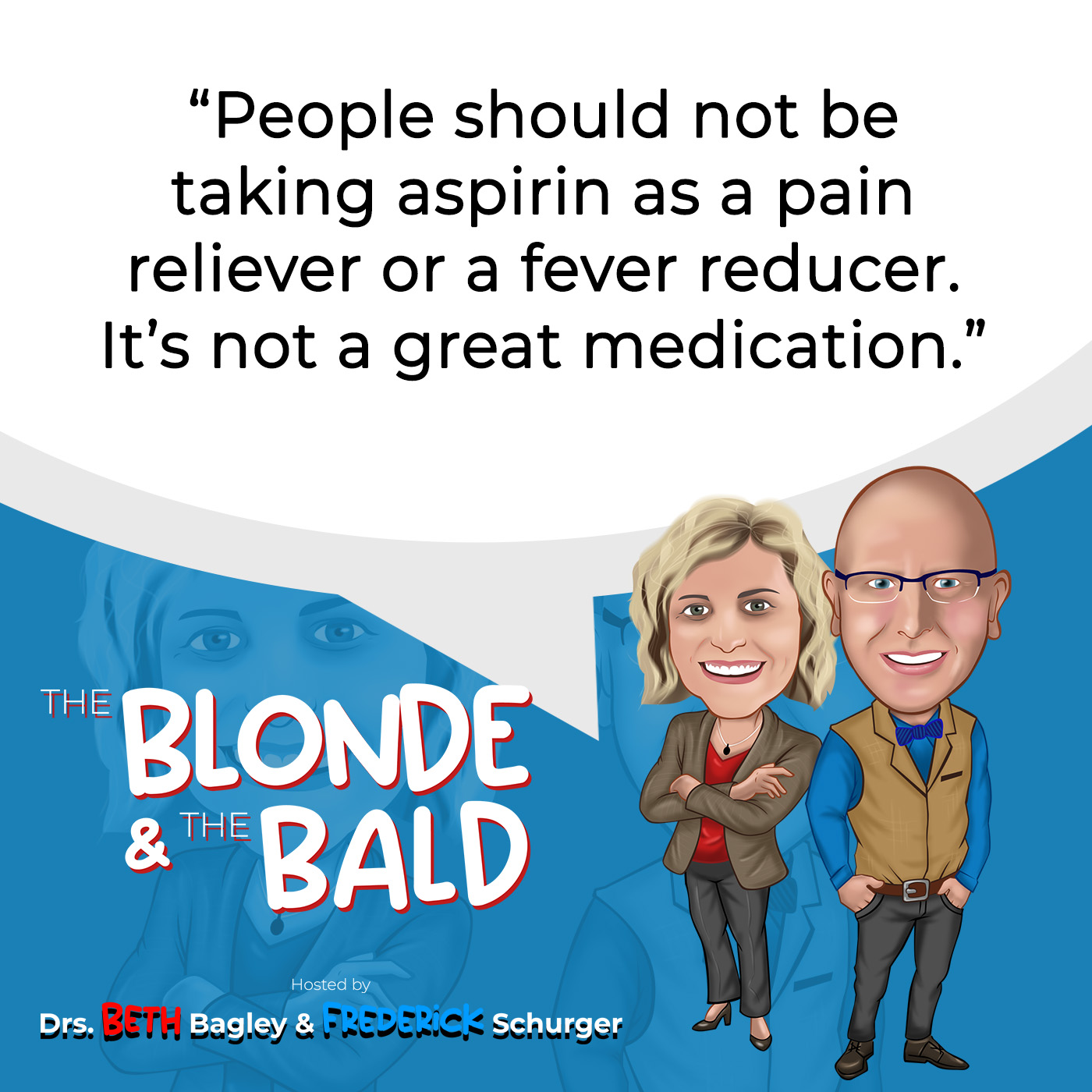
When you read the label, there will be something on the label to paraphrase for acute pain. A campaign means it’s brand new, and you’re like, you’ve hit your limit, and you need something to lessen it. It is not designed for you to be taking all the time. If the pain lasts more than about 1 day or 2, and two might be pushing it, you need to do something different because that’s not its intent to get rid of that, but yet people pop it like it’s candy.
I used to be one of those people. I used to be the person who had chronic headaches and pain. I would go through an industrial-size Sam’s Club bottle of Advil over the course of a couple of months. I would take it almost daily and I didn’t know any better. Nobody ever told me any different. I hadn’t done my own research because I was a kid. I was a kid doing this. Last time, I probably took Advil quite a while ago because I twisted my ankle so badly. It was throbbing.
I was laying there with it throbbing like not crying but wanting to cry. I thought, “This is the time and place.” I didn’t want to walk on it, but knew I needed to keep it elevated. I see all the things that you have to do, but that was probably the last time I took it. The point is I’m glad it was there for me when I needed it for that because I was unbearable at that point and it made it bearable. I only took it for like a day.
Back to Aspirin. You mentioned Reye’s syndrome. Did you find anything debunking Reye’s syndrome and Aspirin?
I didn’t.
I had come across something years ago. I’m not going to go down this rabbit hole too deep, but I’d come across something suggesting that Reye’s syndrome and Aspirin are not as linked as they like to make it out to be. I don’t remember all the details other than that it has also been the rise of Tylenol. Tylenol became popular.

Aspirin: Reye’s syndrome and aspirin are not as linked as they like to make it out to be.
We may have touched on that before because this could have been funded by the time we have a manufacturer.
There were some questions as to whether or not Reye’s is tightly tied to Aspirin usage. I don’t remember the details. It’s one more of those things that people are like, “I don’t want to take Aspirin because it’s going to give me Reye’s syndrome,” or something like that and there’s some back and forth as to whether or not that is the case.
There’s one little thing I looked up and said it can’t. They’re still saying there is a connection, but it says sometimes children with rare genetic conditions such as Medium-chain acyl-CoA Dehydrogenase Deficiency or MCADD can cause Reye’s syndrome and has nothing to do with Aspirin. There are genetic changes that can happen.
It begs the question of whether or not there’s a causation or a correlation. Those two differences make or break some of these claims that are out there.
Number one pain reliever and fix everything in Aspirin.
Reye’s comes along and all of a sudden, it’s Tylenol. There was also a scare about something being put in the Aspirin bottles. This was before they had bottles that had double or triple protections to make sure it’s sealed and it’s never been opened by anybody ever. This is back in the day when the pills are right in the bottle. All these safety precautions that we have. We have on our supplements that you have a special cap. I got some liver supplements and on top of this cap, there was another wrapper. I’m probably going to take this as my Vitamin D. If I take this home and open this up, there’s one more safety seal. All of these things are trying to remind us, “I need Vitamin D.” All of these things are because somebody snuck some poison in at one point in time and then Aspirin and Tylenol got tainted.
It’s reverse marketing. It’s a guerilla warfare of these manufacturers. It worked. I don’t know if, in this day and age, it would work. That stuff is still happening.
How do you package anything to be something else that you want it to be?
What I’m seeing in my conspiracy theory brain is that Aspirin was lost on the market when it started to like, “This is bad.” It’s good for cardiovascular. Every adult needed to take it, so they remarketed it as a supplement. It was marketed as something healthy and it isn’t.
In fact, one metastudy suggests that there is a little bit of benefit if you are in the city-bitty little group as opposed to everyone past 60. Everyone past 60 has a cardiovascular risk. They’re saying everybody in that group has no benefit because as we get older, a lot of the collagen matrix and tissues will not hold up strongly. We talk about older people and having thin skin, literally. The question is how much of that thin skin is some of these medications have been screwing with their ability to create good strong skin? How much of it is thin because problems are coming on?
What ends up as we get older, a lot of the collagen matrix and a lot of our tissues just will not hold up as strongly.
It’s aging and there’s probably a little bit of bull. You do have a good portion of your patients who are Amish and many of them will not take medication. I know they probably would never do studies either, but comparing the health of an 80-year-old Amish woman versus a cohort of 80-year-old women would be cool.
I can tell you right now. They are stronger and healthier. They’re still working. They’re doing chores and things like that. Do they have their aches and pains or arthritis? Absolutely, but they are not frail or falling apart.
What’s the story? Why did you get into Arthur? Why did you start doing that?
There’s a two-part to this. The first part was I had a great experience growing up in an Amish community in Monroe, Indiana. I always liked their work ethic. I’m like, “These are good people and salt of the Earth. I would like to help serve them and bring upper cervical to their community.” I set up an office. I had some other patients that helped out that they didn’t have to drive to Springfield. It was a shorter drive. I lasted about 3 or 4 months going over. There are no patients. That ended really quickly.
That’s too far to drive.
Too far to drive for no return, and then all of a sudden, in 2011, I get this call from a mother whose a couple of the kids were having migraines, but she wanted to get the oldest son in first. She came on over. She is Mennonite. She’s driving. She’s not Amish directly, but it’s cousin religions. She ends up bringing all the kids. They had eight kids. The youngest was a baby at the time. I’m going through the oldest’s case and I’m like, “Yes. Here’s how we can help you.”
She asked, “My daughter is also having problems,” after I explained exactly what I was going to do. It happened that I had a free morning. I did at least 2, if not 3, that morning. Within about a week, the entire family was under care, except for dad. Dad needed a Saturday. We found a Saturday for him. For about one year, they came over to Springfield on a regular basis.
They asked, “What would it take to set up a clinic over in Arthur doing what you do because nobody does what you do in Central Illinois?” I said, “I’ll give a presentation. I need about 50 people so I can come over once a month.” That quickly became weekly. They would have to come over here and get X-rays. I had a limit of I could see four people in the morning.
I could block off time and get 4 done, maybe 5, but that pushed it for me. We were over there in that first year twice a week with the amount of people that were coming over. We eventually said, “We can whittle this down,” because I was killing my weekend. I didn’t have time to recharge. We settled on Tuesday. We started doing Tuesday afternoons every other week. We’ve pretty much been on that schedule ever since. A lot of it is you almost want to have a community that is ready for you and wants you to come in and do what you do. That’s the way that works.

Aspirin: You almost want to have a community that is ready for you that wants you to come in and do what you do and that’s the key.
You built that relationship with somebody who was already part of the community. When you did that in Arthur, do you rent a space? What do you do? Is it just a room?
It’s a side building. It’s a retirement community. They do have a full-on nursing home where you need full care, but you have your own little apartment. You had to be self-service. There was nursing available, but you needed to be mobile. They had extra rooms available. I rented out a room. We moved around a couple of times. I rented out a room from them, and then they said, “We’ve got people who are going to be in here permanently, but we’ve got this little old office building next door.” It’s probably a little bit more fancy than a garage, but it works.
It’s twice a month.
We’ve got walls in there. We’ve got a resting area. The only thing I didn’t have over there was an X-ray setup. That space doesn’t have room.
If they want to start care, they come down to Springfield one time.
Sometimes, they need to come back every couple of years. I’ve got a couple that need to get back in.
Absolutely, for re-evaluation and stuff like that. To start care, they would come down one time. How long of a drive is that?
It’s about 90 minutes.
It’s a testament to your dedication, that you would spend that time to see underserved area with upper cervical chiropractic and help the community there. Way to go back. That’s awesome.
I love it and it’s great people. We were there on Tuesday and we saw 50 people or something like that. A lot of families do great. My only question is, I’ll scan them after they get adjusted and the line straightens right out, which we don’t always get with our patient base.
We have so much toxicity.
There’s a lot of extra toxicity outside of that.
They immediately go build houses.
Milking cows is the easy part. I shouldn’t say that. I do have a patient who owns a dairy farm. She’s hurt a little bit, but I have another patient who is a farrier. What that is he shoes horses. Sometimes the horses don’t want to be shoed. He’s been kicked a time or two. He does great when we get his head on straight, but if he takes too long in between, he has seizures and the problem ends up being sometimes he can’t get in. He’s highly in demand throughout the Midwest. We’ve been good. I pester him. His wife keeps on top of him as well to make sure that we get him in at least every couple of months at the latest.
I’ve had a few patients with seizures, but I haven’t had a ton. That’s one of the populations that would be cool for. At least hear this information as people with seizures, kids with seizures because it could be complicated by an upper cervical subluxation.
I’ll be honest. I feel like seizures are a home run almost every time. I had somebody ask me, “I was reading that upper cervical helps with tinnitus,” and I’m like, “I’ve read that too. My track record with tinnitus is 50%. There could be other things going on with tinnitus other than the upper neck and the atlas of the axis, but I have had more success with seizures consistently.” If we can keep them on a regular care plan, they do great.
I’ve talked about the one young boy who had heat seizures. He couldn’t even play outside. He was only about four. His dad was physically big and a good linebacker-sized kid is what he will end up being. I can’t imagine him not being able to play outside and we got him adjusted. I don’t think he had another heat seizure. The last time I chatted with them, which had been a while, he was free in a seizure.
My grandfather was a conventional chiropractor. He had a lot of stories of his patients and stuff through the years. He had been out of practice for probably twenty years when he passed away. There were a few patients who showed up at his funeral. One of them was a man at this point, but his story was that he was a kid who had epilepsy or chronic seizures and it was destroying his life. My grandfather started getting adjusted. He was a good adjuster.
He was old-school diversified, but he could set some bones and change this kid’s life to the point where he came to the funeral of a chiropractor he hadn’t seen in twenty years. That was such a cool experience. I was in high school at the time. To see that even twenty years later, there are patients of my grandfather who still show up to pay their respects to him. It was pretty cool.
Seizures respond great. Over there, I see a lot of a lot of migraines, headaches and some low back pain. They do great and they clear out. They hold for sometimes weeks to months. I’ve got one family of nine that came in. The oldest daughter just got married. She’s got a different schedule. The youngest, his dad owns a sharpening company. They’re sharpening all sorts of stuff. He had the bright idea. He wanted to whittle his own little knife for fun. Instead of using an actual knife or a chisel, they took a screwdriver and turned it into a sharp chisel. He could do that.
He’s working on this little knife handle. He bent over and it slipped as it might. He felt like his neck was giving him a little bit of grief. I don’t think I’ve had to adjust this young man in at least 2 or 3. He’s doing great. Most of his oldest brother has seizure problems. As long as we keep his head on straight, he still needs a little bit of medication for some other problems he’s got, but generally, he has not had a major seizure problem in a long time. It’s interesting to see these two levels where I’ve got to adjust the oldest brother regularly, but the youngest brother has been holding since he was a young child. It’s neat.
We have the best job in the world.
At the seminar that I was at, I was chatting with a couple of guys. One of them said, “Why don’t we get the miracles anymore? Why don’t we see those miracles on a regular in our society?” I see him all the time in that community because they are not dealing with all the junk and the technology, but they have their phones.
We don’t talk about that. It’s for business purposes.
They don’t bring it into the house. They’ve got a little phone booth outside where their phone landlines come in, but they’ll also put stuff in there and they’ll charge the phones. They’ll have a solar charging station for charging it overnight. They disconnect from that properly and that makes all the difference. Sunday is a day of rest for them, which you start hearing what their Sunday is like. It’s restful, but somebody is still working because somebody’s going to make all those lunches.
If they’ve got animals, you still have to feed or do chores.
I was chatting with a young man, another doc, who is Jewish. He says he got more religious a few years ago. Part of observing the religion is observing the Sabbath. Sundown Friday until Sundown Saturday, he says it’s about 25 hours because of going to the synagogue and things like that. He said it’s a 25-hour window where you don’t even touch a light switch, “I don’t know how you touch a light. Don’t touch the light switch when you are in modern technology and you want to go to bed.” It’s like, “Didn’t you have it on at one point in time?”
That’s the level. He was checking his phones before we went out to dinner on Saturday. He was catching up on all his messages. His comment was, “It was hard to do it first.” He is so refreshed. He gets to spend time with his kids and his wife. He says, “It’s so much better.” We got to disconnect. We got to make that time for family. I still contend that COVID taught us that we need to take a step back and consider our immediate families and the people around us.
COVID taught us that we need to take a step back and consider our immediate families and our immediate people.
Turn off the news. You can’t do anything about that.
There’s nothing good. In fact, I’ve been busy. I’m behind on listening to my normal news sources.
You still made it through the whole week and you’re still alive. It’s incredible. How did you do it?
The funny thing is I don’t think I’m missing much. In fact, I feel a bunch of stuff on my YouTube feed and then I got busy and I’m like, “I can skip that. I want to watch this because it’s a kettlebell training thing. It’s this or that of the other.” It is miraculous stuff we can say, “I don’t need that.”
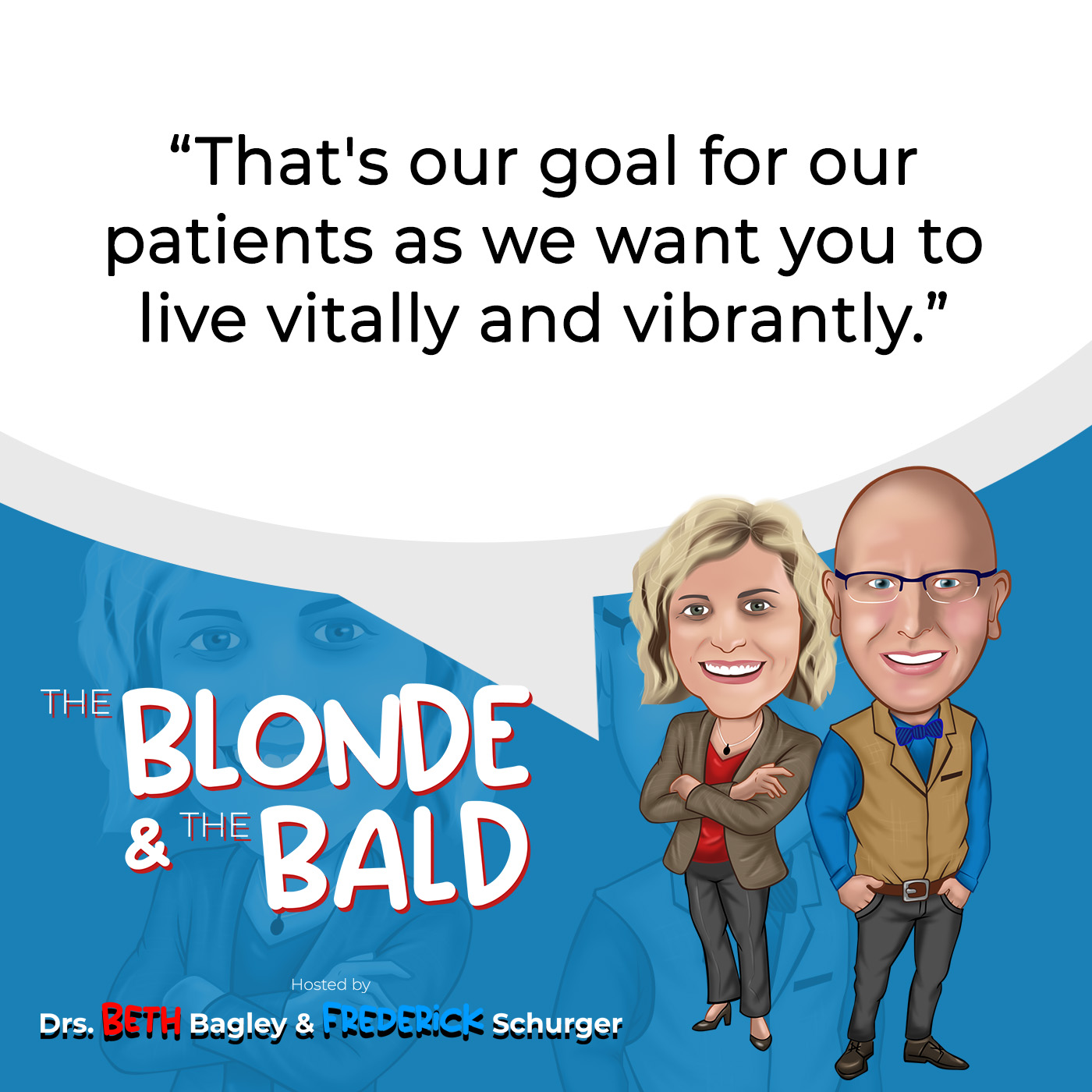
It was good to have this discussion. I’m glad we got through all the stuff we needed on Aspirin. Hopefully, a few of you reading can make some better choices, make some decisions and talk to your doctor about that. Where can they find you?
I am at KeystoneChiroSpi.com.
I’m in St. Louis, Missouri. You can find me at PrecisionChiropracticStl.com in Springfield, Illinois and Arthur.
Make sure you like, subscribe and give us a five-star review. That helps the algorithms. Apple apparently is not necessarily for us because there are only 25 or 30 of you and thank you so much. Give us a review. We will read those. We want to make sure people can find this content so that they can be informed and know how to have the best life possible. I hate being cliché like that.
It’s true. That’s our goal for our patients. We want you to live vitally and vibrantly.
Thank you so much. We will see you on another episode.
Important Links
- KeystoneChiroSpi.com
- PrecisionChiropracticStl.com
- Apple Podcasts – The Blonde & The Bald
- https://LinkTr.ee/TheBlondeAndTheBald


